Pigs fighting off deadly disease are just one of the things made possible by gene editing. So what is it? Should we be worried? And is this GM by any other name?
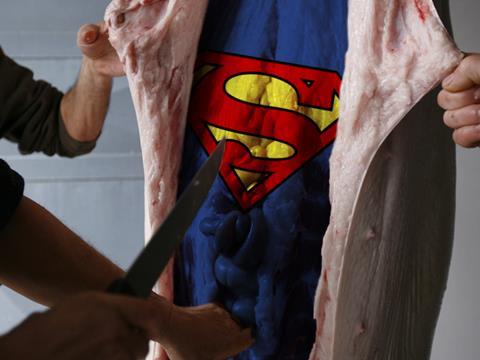
Like all the best superheroes, Pig 26 blended right in. Innocuously snuffling around a sty in Edinburgh you couldn’t pick him out of his litter of Large Whites, all pale pink with a smattering of wiry hair, flat nose and tiny trotters. But buried deep within his DNA lay a genetic gamechanger.
Born in 2013, this little piglet was one of the first animals to be successfully created by scientists at Scotland’s Roslin Institute using a new technique known as ‘gene editing.’
“Staggeringly easy, quick, and leaving no trace,” scientists raved of this latest tool in their genetic toolkit, which held the potential for “dramatic” opportunities for ultra-targeted tweaks to livestock DNA that could boost production and aid disease resistance. In other words, our very own super pig.
Progress since has been rapid. Only four years later and researchers have not only engineered animals resistant to deadly African swine fever, but in February they unveiled a new litter of gene-edited swine resistant to Porcine Reproductive and Respiratory Syndrome (PRRS) - a disease that costs the pig industry billions globally. In six years, they say this gene-edited pork could be sitting on supermarket shelves.
A brief history of GM animals
1973: A late-night discovery
A chat between two scientists at a Hawaiian deli led to the birth of modern genetic engineering. Stanley Cohen and Herbert Boyer met and exchanged ideas over a late night snack by Waikiki beach and by 1973 the pair had devised a plan to cut and paste a gene from one organism to another
1974: Transgenic mice
Only one year later and scientists Rudolf Jaenisch and Beatrice Mintz had successfully worked out how to integrate foreign DNA into mouse embryos, producing the first transgenic mammals in history
1975: Setting the rules
After concerns were raised about the impact of this new GE technology on human health, experts and government officials gathered in 1975 at the three-day Asilomar Conference to thrash out what guidelines should govern its development
1975-2015: Breakthroughs
Since that time there have been all kinds of GM breakthroughs. In 1990 Herman the Bull, the world’s first transgenic cow was developed. In 2006, a GE pig was created that produced omega-3 fatty acids. And in 2012 researchers from New Zealand developed a GE cow that produced allergy-free milk
2015: GM fish for sale
It wasn’t until November 2015 that the first GM animal was approved for sale. The AquAdvantage Salmon, which grows at twice the speed of conventional salmon, was given approval in the US and secured $25m of investment to help bring it to market in early 2017
“It could be three or four to be honest,” says Professor Bruce Whitelaw, deputy director of developmental biology at the Roslin Institute. “If the regulation is in place, I would guess a company would be comfortable enough to put this into the market.”
Despite only entering the scientific sphere a decade or so ago, gene editing has been taken up by research labs across the world at an unprecedented rate. The technique “allows more things to be done faster, be it virus, plant, fish, bird or livestock,” explains Whitelaw, by wielding “molecular scissors” that can cut at a smaller level than has ever been possible before. So precise is it that scientists only needed to tweak a single letter among three billion held within the DNA of Pig 26 to get their desired result.
And the opportunities of this new genetic precision are being tested worldwide. From non-allergenic eggs set to hatch in Australia after scientists tweaked a single protein, to hygienic honeybees in San Francisco bred to ward off disease and tuberculosis-resistant cattle in China. Front of the global pack though is the PRRS pig
Biggest disease challenge
The spread of PRRS can be catastrophic for UK farmers. It leaves infected piglets with severe breathing difficulties, can cause premature death or stillborn young and has been one of the biggest disease challenges facing the pig industry since its arrival into the UK in 1991, according to the National Animal Disease Information Service. By using gene editing to snip away at a single gene that allows the infection to take its grip, scientists believe they can stop the spread.
“At a superficial level, GM is an extra gene being added. All you’re doing here is causing a DNA break that’s then fixed by the machinery in the cell”
Crucially, say researchers, these aren’t GM pigs. Not only is gene editing 10 times more efficient than GM, it leaves zero trace on an animal’s broader genetic make-up, it is more targeted and could reduce the reliance of the global livestock industry on antibiotics by offering up in-built immunity.
“At a superficial level, GM is an extra gene being added,” explains Whitelaw. “All you’re doing here is causing a DNA break that’s then fixed by the machinery in the cell and you can tell it what to fix it to. You’re not adding a piece of DNA. It literally is editing. It’s as simple as writing a Word document on your computer screen. If you type in a letter that isn’t correct then you’ll cut out the letter and put the right one in. That’s exactly what it’s doing to the genome.”
But the mere suggestion that gene editing might not be wholly equivalent to GM leaves Peter Stevenson, chief policy adviser at Compassion in World Farming, chortling down the phone. “I don’t for one moment accept that gene editing is fundamentally different from GM, it’s a form of GM,” he says. “They’ll argue it’s different because they’re not introducing a gene from one species to another but modifying existing genes. But in all the years this debate has gone on nobody has ever said that GM is only about that.”
Even Martin Livermore, director of the Scientific Alliance, accepts the whole thing is a “linguistic nightmare.” Though “technically all GM is a DNA technique where we can add or subtract pieces of DNA”, gene editing is distinct in that it doesn’t “introduce so-called foreign DNA”.
“The trouble is, though, if you call it something different they’ll say it’s all GM under a different name, so it’s a difficult thing to sell,” he sighs.
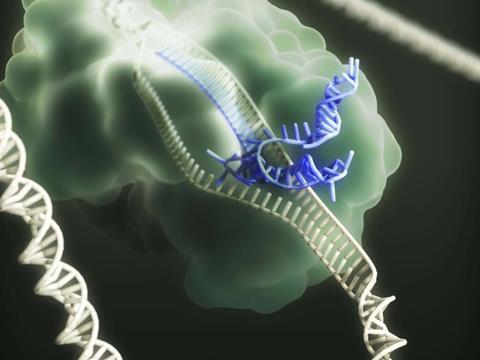
And far from a silly game of scientific semantics, the outcome holds huge implications for the future of gene-edited pork. Whether or not gene-edited pigs should fall under the same strict regulatory restrictions as GM products is a dilemma currently being grappled with by the European Commission. Though the European Academies Scientific Advisory Council has called for gene-edited techniques to fall outside the scope of GM, as they don’t involve the introduction of foreign DNA, the Commission continues to drag its heels, leaving both sides in legal limbo.
In the US it’s a similar story, with the FDA asking for public contributions in March to help it make a call on where gene editing should stand on the legal spectrum.
Pure self interest
Who cares? Well, everyone with a stake in this. If the authorities treat the Roslin Institute’s gene-edited pigs like GMO products, it’ll throw up serious obstacles to commercialising gene-edited pigs, or any other product, with the technique embroiled in the 30-year-plus controversy of GM livestock. It might not be “pure self-interest” driving scientists to insist so vehemently this shouldn’t be the case but it does play a part, says social scientist at the University of Edinburgh Ann Bruce.
Because despite a history stretching back to 1973 (see timeline below) it was only in 2015 that the first GM animal was approved for commercial human consumption, and it took a staggering 22 years to achieve.
A blank cheque? GM spuds face backlash
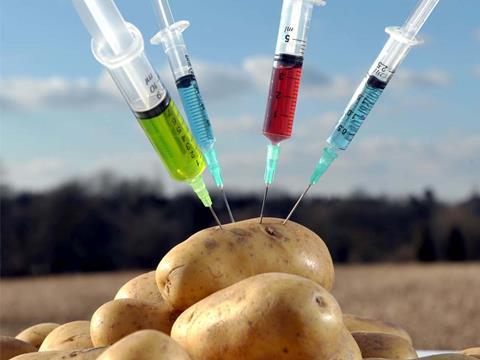
It was a great day to bury bad news. A week after Theresa May declared a shock general election and plunged the UK into another round of political maelstrom, farming minister George Eustice quietly signed off on one of the UK’s first field trials of GM veg.
The four-year project, taking place at the Sainsbury Laboratory in Norwich, is set to test the viability of various genetically modified potatoes and their resistance to blight.
Eustice had ‘taken advice from the advisory committee on Releases to the Environment and Natural England’, he said in his consent letter, with several restrictions agreed.
A width of 20 metres would be kept around the GM plants and the crop would not exceed 1,000 sq m in size.
But, try as he might, Eustice couldn’t avoid the inevitable backlash. “We are deeply concerned that Defra has signed a regulatory blank cheque in consenting to the planting of experimental potatoes that have not even been analysed in a test tube, much less properly studied under controlled greenhouse conditions,” said Liz O’Neill, director of campaign GM Freeze, when the organisation discovered a green light had been given.
Food safety, GM contamination and the fact ‘these potatoes will be of no net benefit to society’ have all been raised as serious concerns by them and 32 other organisations that signed a multi-agency objection to the trial in May, all concerns they argue have not been addressed prior to the government giving the trial a thumbs-up.
“More and more people are objecting to GM field trials, but their concerns are being ignored,” added O’Neill.
“What we grow and eat is intrinsically linked with our values as a society. Good governance is about more than narrow technical risk assessments and it is entirely unacceptable to dismiss concerns about the wider economic, social and societal impacts of GM crops.”
An application to sell AquAdvantage salmon (AAS), which can grow to the same size as conventional farmed salmon in half the time thanks to the insertion of genetic material from both the chinook salmon and the ocean pout fish, was first submitted to US authorities in 1995. Fourteen years were spent working out what the process should even be for approval, and a further six were spent grappling with whether the product ticked all those boxes.
“Escapes and potential genetic impact on wild Atlantic salmon populations,” were both among the legal hurdles to jump over, says Dave Conley, director of communications at AquaBounty Technologies, which produces the salmon. As was “concern for the health and safety of consumers” despite the fact that “the fish was found to be identical in every measurable way to other Atlantic salmon”.
And even when the FDA gave the green light two years ago, “groups opposed to biotechnology have mounted campaigns to discourage retailers from carrying AAS when it comes to market.”
Many other GM projects have faced similar delays. At the University of California Professor Elizabeth Maga and her team have been breeding GM goats that produce enzyme-enriched milk since 1999. The technology has applications in reducing mastitis in dairy animals, extending shelf life and helping to prevent diarrhoea in children. But despite feeding the milk to animals without incident, Maga can’t extend tests to humans without FDA approval - which she still doesn’t have.
“There’s a lot of anti-sentiment toward genetic engineering, especially in animals,” she says. “There’s a stigma we work with and so it’s hard to get funding for this type of work.”
And with these applications to sell GM livestock swiftly kicked into the regulatory long grass, scientists fear that, without a legal distinction made, gene-edited animals would join them.
Accelerated evolution
So they should, argues Soil Association policy director Peter Melchett. “Gene editing carries the same risk as GM by altering the DNA in unpredictable and unknowable ways,” he insists. Alongside “huge animal welfare objections” there are the “human health uncertainties which apply to livestock just as much as they apply to crops” as “when the engineering or editing goes wrong the offspring die”.
There is a long pause when I put that to Maga. “Animals don’t live forever,” she responds finally. “We have to euthanise them and we collect samples and we do invasive studies. But we don’t kill them on purpose to do that. People think we’re messing up the animals and we’re not, we don’t want to, that’s not our goal.”
“You’ve got to have supermarkets who are willing to sell the products and they won’t do anything controversial”
And besides, gene editing “is less risky because it’s so precise,” says Whitelaw. “We’re causing different variations in genes and it’s either the same as or very similar to what nature has already produced, but just not in that animal.
“I don’t see the risk to that, because that mutation has existed for a long time in nature. All we’re potentially doing is creating an accelerated or targeted evolution within the animal.”
This isn’t a huge departure from existing selective breeding techniques, only sped up. “If you take dog breeds for example, they’re all very similar genetically and you look at the enormous number of recognised breeds,” says Livermore. “Are they modified or not? Or modern day wheat that can’t survive in the wild, it’s been selectively bred to give us what we want but doesn’t bear much resemblance to the wild wheat plant.”
That argument simply doesn’t wash with critics, however. Not least as animal rights groups point out that selective breeding has already come at huge cost to welfare. Look at modern dairy cows, says Stevenson, bred to push their milk output to 10,000 litres per year, 10 times that of beef cattle.

“This is not a minor adjustment to the natural capacity of the animal,” he points out. “Farm animals are already so productive that many of them are suffering from serious health and welfare problems so to use GM or gene editing to push them further is something we’re very concerned about.”
Interfering in genetics isn’t even necessary, argues Tracy Worcester, founder of the Farms not Factories campaign. “It is not the pigs that are not resilient enough, it is our broken food system that treats animals as inanimate objects,” she insists.
“Well reared, free-range pigs are supremely sturdy animals that rarely get sick. But the extreme stress caused by cramming them in cages to lie in their own effluent and denying them their instinctive need to snuffle and forage weakens their immune system and leads to illness.”
Regardless of where you stand, we need to take a big step back anyway, argues Melchett. “Who is going to buy these things? What’s the point of developing them if nobody is interested in eating them? There is no sign of a market for genetically engineered or gene-edited meat, eggs, fish or whatever.”
In fact, he uses the word “revulsion” more than once in our conversation to describe the public attitude to any genetically tweaked product.
“That’s a very strong word, isn’t it,” says Bruce, when I put it to her. “The evidence is that people are more negative to GM animals than GM crops, but the early technologies were very basic and the things now being done by gene editing I’m not sure have been tested in terms of public attitude.”
Until now. And when we asked 2,000 people for their views on GM and gene editing, the results were remarkably split. Polled by Harris Interactive, exclusively for The Grocer, around 50% had come across the concept of gene editing in some capacity (though for 30% it only ‘rang a bell’) and, once it had been explained, for 27% this was clearly distinct from GM. Twenty-six per cent couldn’t see a meaningful difference while 46% weren’t sure.
Tip the balance
Perhaps most significantly though, 31% would consider buying gene-edited meat (compared with 27% for GM) with only 17% dead against it (compared with 27% for GM).
This is crucial because “it’s this acceptance issue which is the stumbling block,” says Livermore. “You’ve got to have supermarkets who are then willing to sell the products and by and large if they get opposition they’ll keep their heads down and won’t do anything controversial.”
Too often the mistake made with GM crops has been to focus on the benefit for industry, points out Bruce, a fact that may explain why the public didn’t leap to the defence of a GM trial quietly confirmed in May to test the genetics of potato blight (see box).
“With GM crops they were just production benefits, so why should we take a risk? People are more open to human benefits, and the fact we have some pharmaceutical products made using GM animals does tend to reflect that.”
Our survey results bear that out, with 39% saying the biggest draw to try GM or gene-edited meat would be any bonus for their own health, with cheaper cuts (27%) close behind.
Even Stevenson, though “terribly apprehensive” about the whole thing, can accept “there might be a number of very limited circumstances in which it might be helpful”.
But to tip the balance, the benefit of tinkering with DNA must be big. “Anything that’s seen as marginal by consumers” won’t be enough, says Livermore.
Disease-battling super-pigs might not do it, in other words, but the rapid progress in gene-edited livestock leaves a big budget remake nearly inevitable, with public appetite less revolted than some campaigners might have you believe. Six years sounds ambitious, but it’s likely we’ll see gene-edited meat on shelves before pigs fly.









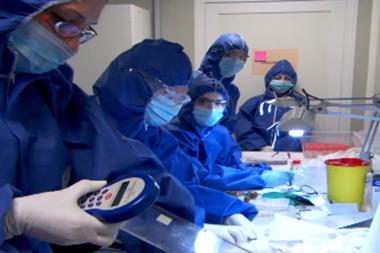
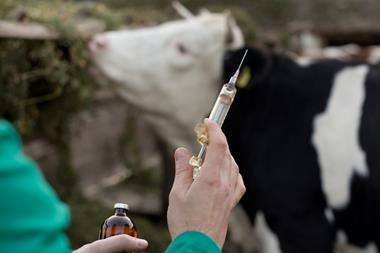








No comments yet